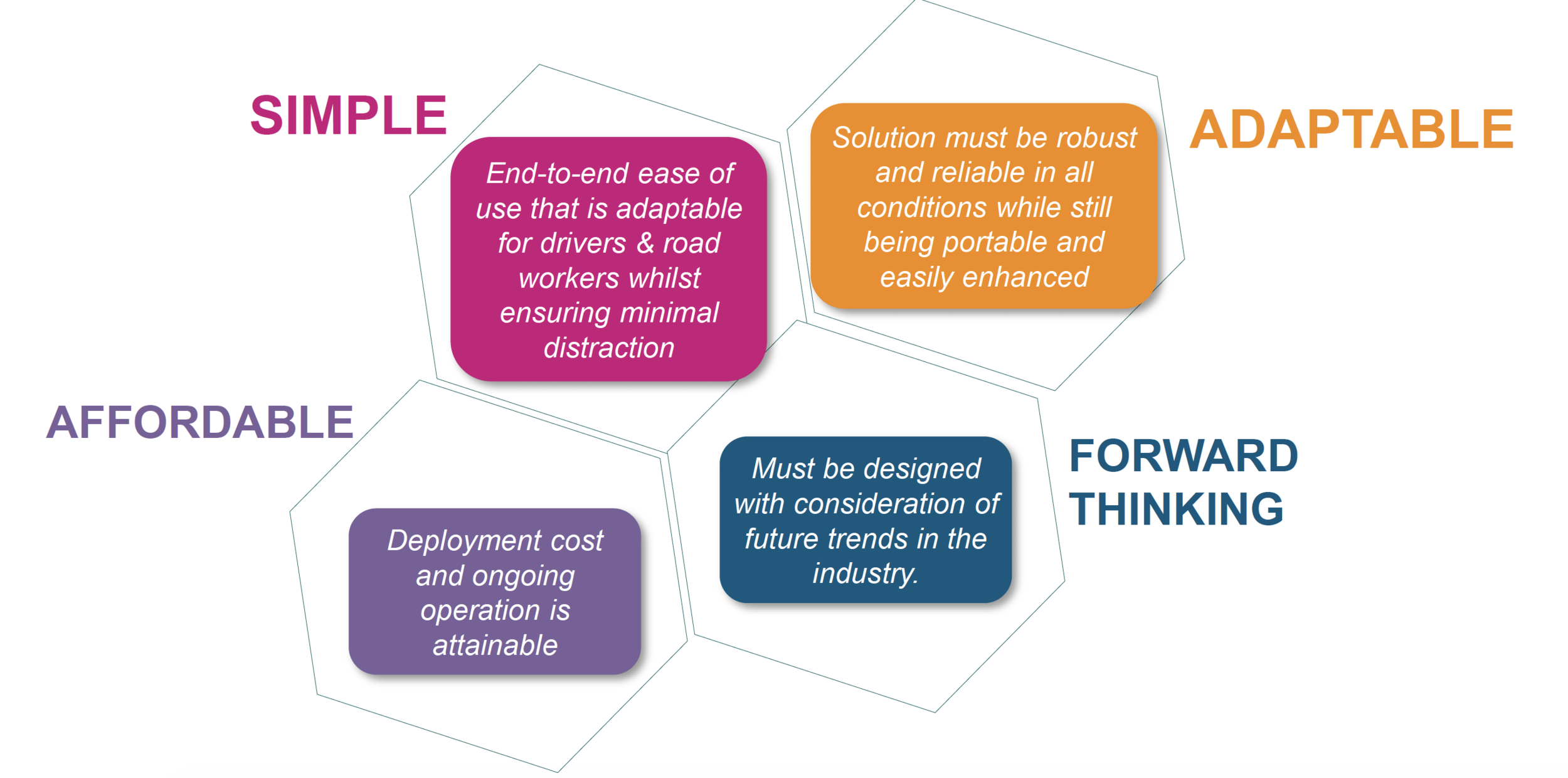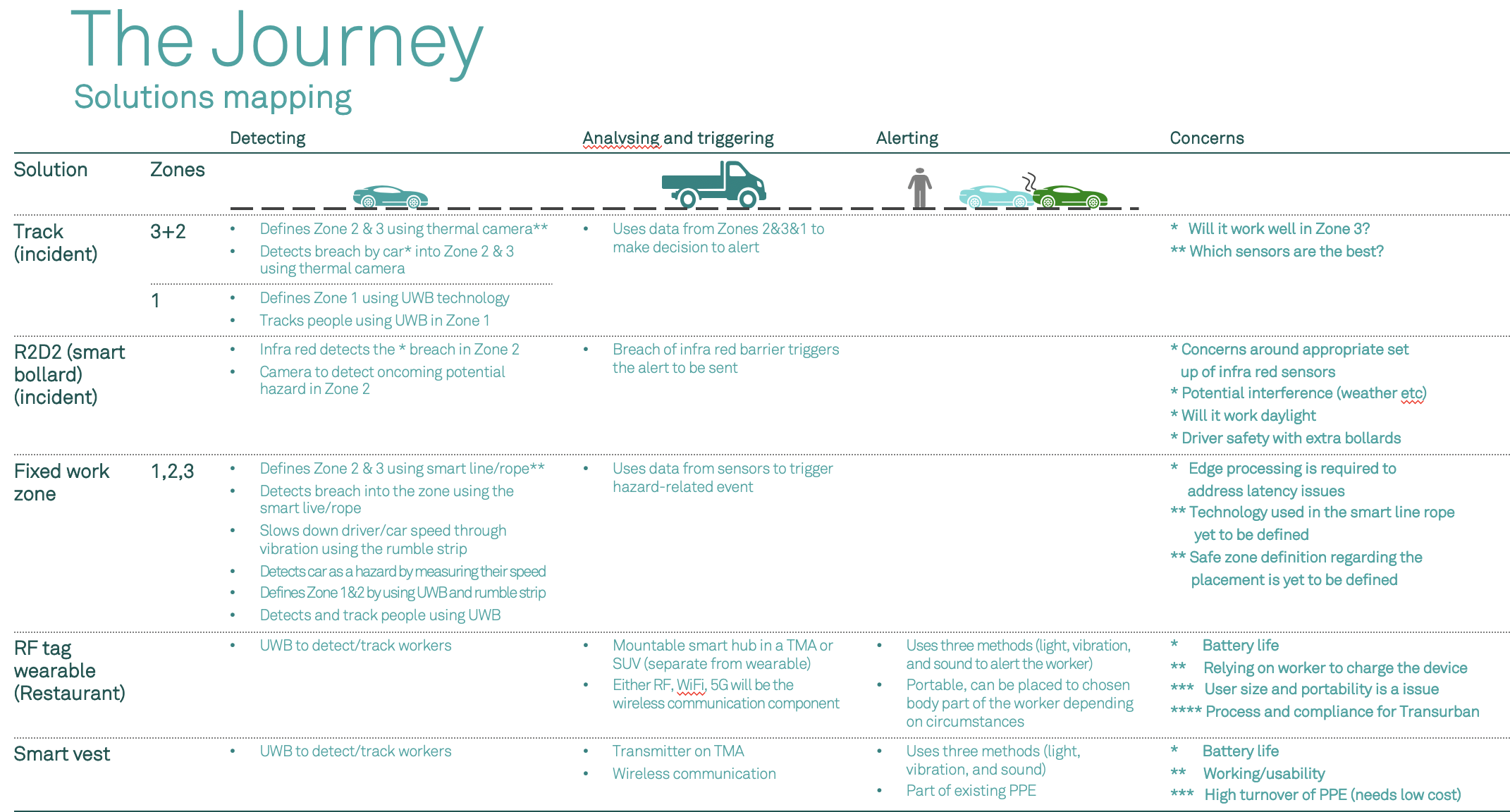
Telstra Incubation - Melbourne, Australia
Transurban Smart Cones
Background
A collaborative approach to develop beneficial work zone safety solutions that enable Connected and Automated Vehicles to navigate safely through a typical motorway scenario, such as roadworks and incidents. A traffic cone drones that can deploy and arrange themselves automatically without a person putting themselves in danger! The problem worth solving was a big one - road safety workers getting injured while trying to deal with traffic accidents on busy highways. The trial also included smart rumble strips that sense when a vehicle enters the area and alerts road workers to get out of the way.
My Role
My role was UX & Concept design. During two week sprint we went from a problem to a prototype of the solution trialled in real life environment
Tools & Techniques
Double Dimond, Personas, Client interview, Contextual interviews, Desktop research, Rapid prototyping, prioritising based on 3 lenses of innovation, Field testing
Process
We started with the problem statement of "HOW CAN ROAD OPERATORS MAKE WORKZONES SAFER TO PREVENT TRAUMA?".
Firstly, we interviewed our customers to understand what success means to them and what was their desired future state. It helped us to identify main constrains and values that were turend into set of design principles: Simple, Adaptable, Affordable, and Forward thinking. These rules became later guidelines for the rest of the project and helped in sorting ideas and staying on track.
The next step was to run series of contextual interviews with key stakeholders and users. Findings gave us deep understanding of the problem and key challenges around road safety industry. As an outcome of these interviews we managed to create a set of personas (both drivers and road workers). Additionally we learnt about the budget, technical constrains and behavioural delimitations. All that knowledge helped us to empathise with users. After Discovery we were ready to move onto Define stage. We were able to prioritise importance of safety issues that we would focus on during the sprint. Defining Use Cases helped us narrow down to few sets of scenarios that we would be solving for.
Next was a desktop research of existing technology. It was important to understand the viability and feasibility of potential solutions. Thanks to that, everyone gained a clear understanding of technology at hands, what could work well and risks may exist. It helped with creating common ground for all team members before ideation phase.
Then we moved onto rapid brainstorming. Everyone was anonymously generating as many and as crazy ideas as possible. To sort out best and most intriguing ideas and hear more about them we did a visual voting. Then we were ready for the first run of prototyping. We challenged selected ideas from brainstorming to be visualised. Team memebers were using LEGO, markers, paper, glue and many other creative supplies. It was important not to marry the first idea so we did 3 rounds of prototyping on each use case. . Together with the team we evaluated, tested and questioned each solution. Then team regrouped to run series of iterations.
Next, we created a Journey of the solution. We laid out how selected use cases interconnect, what are dependencies between them and what concerns needed testing.
Team and stakeholders voted again and assigned the score on Desirability, Viability and Feasibility for each solution. Once we landed at final set of solutions for each use case, the team has moved onto technical prototyping. We were able to establish a final concept that would allow testing its most risky parts.







